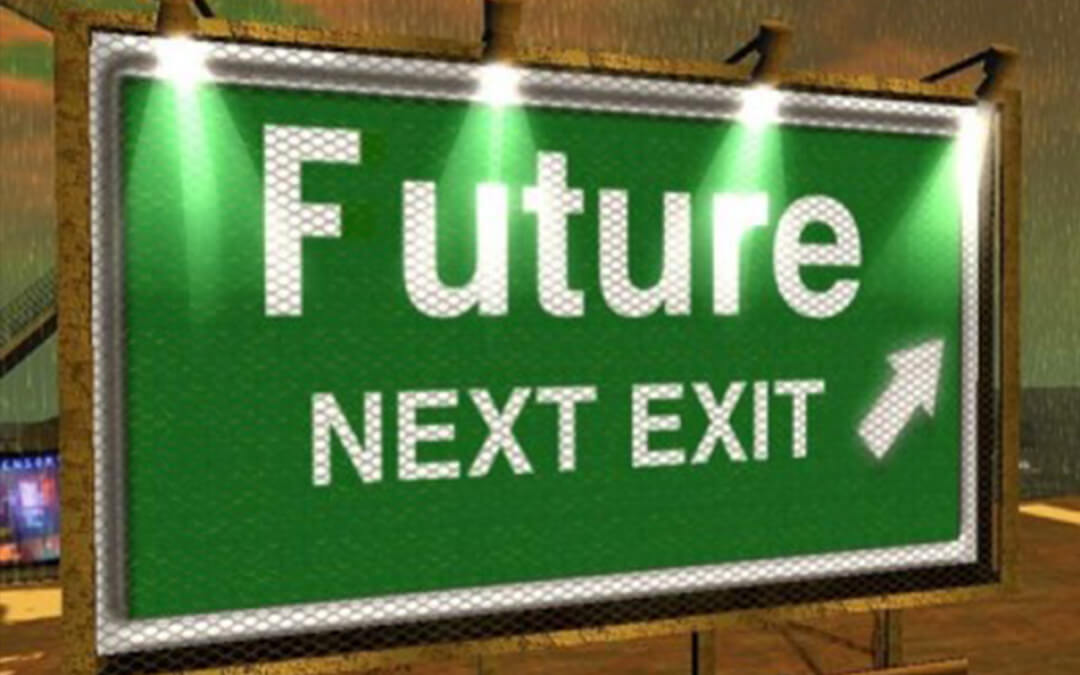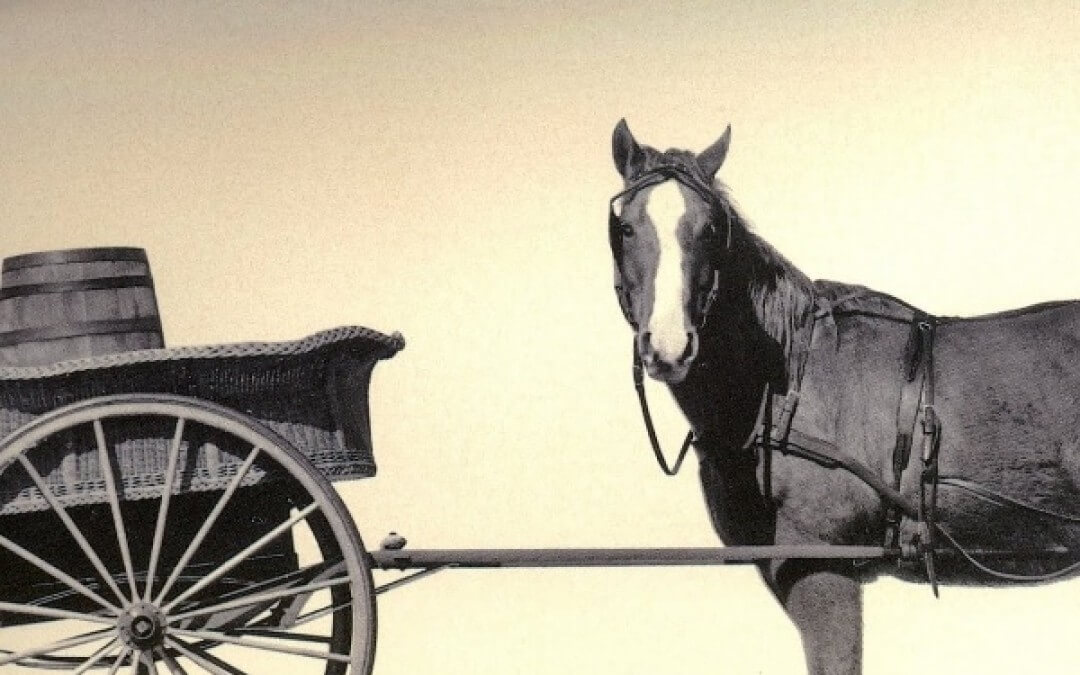Blog

When People Who “Don’t Do Endorsements” Pointedly Endorse A Brand
Like most people, Professor Gary Hamel does not make a habit of being a shill for brands. But… When a brand reaches out in a significant way, even the most conservative of us will end up saying something about it. We’ll find the language that helps us express the distance we see between what we appreciate and what we’ve tolerated in the past. And we’ll say it out loud, often couching our comments in a “I don’t usually do this, but…” excuse. That’s the true power of an emotionally meaningful brand strategy – a strategy that creates experiences that rise above the norm, stand apart from the...
Read more >
Can A Diversified Business Operate In A Singularly Meaningful Fashion?
Many businesses cut across diverse industries and functions, serve a complex web of customers types, and manage a mixed bag of employees, from outgoing sales people… to heads-down scientists, engineers and production people… to sharp, results-driven executives. When all these divergent personalities are taken into consideration, it’s easy to give up on trying to define a single, meaningfully-focused ambition that can be used to drive the entire business forward. It’s not easy, but it’s important to do. Of course, it’s not an easy thing to do, but it is an increasingly important management...
Read more >
How Far Have We Come Since The First “Electric Newspaper”?
Brands need to navigate their presence in the intense flow of modern information, not by creating more information as much as by being especially helpful to people overwhelmed by tons of increasingly untrustworthy information. The first US “electric newspaper” appeared in Los Angeles In 1931. The marvel of this first display was that it could present news “as it happened” – well, at least as fast as it was known to have happened via the then slow and clumsy labyrinth of pre-Internet media connections and hierarchical editorial control (which was mostly for the better, I believe; but not...
Read more >
The Future Is Now – Humanize Your Product Or Service Or It Simply Won’t Sell!
Brands often look to the future for clues on how to adapt to changing technology and culture. But much of what futurists say is coming can be acted upon today (e.g. human-centric branding). To learn about what the future may bring to digital marketing, Dana Rousmaniere spoke with Gerd Leonhard, “one of the leading media-futurists in the world.” What this futurist envisions Here are a few salient points from the discussion on the HBR blog: “You’re going to stop buying things from companies that don’t fit your values, just because you can’t see giving them the money.” “All of the companies of...
Read more >
The Cart Goes After The Horse. Okay, Which One Is The Horse?
You can usually divide the world into those who think corporate sustainability programs are for real and those who say “window dressing, PR, don’t believe a word of it.” But both camps share the same view about why companies do sustainability reporting, because it shows off how well they’re doing. In other words, almost everyone thinks sustainability reporting for corporations is like wrapping paper on a gift: a thin veneer, for appearances only. Would it surprise you to learn that almost everyone is wrong? The reality is that reporting has a huge influence on what companies actually do to...
Read more >
Brands As Quality Content Generators: GE Focus Forward (Even When Talking About Shit)
Brands have the opportunity to use the Flipboard app to curate interesting stories that support key brand attributes. Flipboard’s recent addition of user generated “Magazines” has added a new dimension to content curation on mobile devices. Flipboard’s rich user interface makes it easy to flip through links of stories organized around specific themes. Some brands are jumping on this content delivery idea, which I’m guessing is a primo “cheap and cheerful” way to manage content. GE Minds + Machines: Brilliant Reads A great example I’ve come across recently is GE Minds + Machines, “Brilliant...
Read more >
Storytelling: If Grandma Could Do It, Why Can’t The CMO?
My grandmother used to tell stories to the kids in my neighborhood. She would gather us around, get this far-away look on her face, and start in on a tale of some kids in the woods or a rabbit in the meadow or whatever. They would always be just as long as they needed to be, no longer. We would hang on her every word. Once I asked her to retell a certain story we had heard from her years before, and she agreed. But as she told the story, it kept taking twists and turns I did not remember from the first time. ‘That’s not the story, Grandma,” I objected. She nodded with certainty. “Yes it is,”...
Read more >
Data Analysts Detect Pattens – Smart Brands Create Patterns
The new won’t come from looking at past patterns. It will come from bold brands that create new movements, behaviors, and patterns in our culture. I came across the following comment left by “Jon P” in response to a blog post that pondered the difference between puzzles and mysteries: “The solution to most marketing problems can only be found within the irrational fears, and colorful impulses of your ideal customers. Because those are the things that drive purchases. “But data collectors and data analysts aren’t comfortable with messy stuff like that. So they go on pretending that the...
Read more >
Who’s Driving Your Brand Promise?
One of the essential components of an emotive brand is a brand promise. Yes, we’re always talking about emotional responses and getting people to engage, but people don’t engage with fluff. They engage with something they relate to, and that comes from a driving idea. You can quickly test whether you have a brand promise – and a potentially emotive brand – by asking two questions. First, what is the brand promise? This should be the easy one. If you’re Zara, it’s fast fashion. If you’re Pepsi, you’re “living for now.” If you’re Starbucks, you’re the world’s café. The second question is a...
Read more >
New Emotions Invented By The Internet…And By Emotionally Meaningful Brands
As technology evolves, and touches on more of our lives, new and more complex emotions are being triggered. Pei Ying Lin studied Interaction Design at the Royal College of Art. As part of her project “Unspeakableness”, she took W. Gerrod Parrot’s graphic, “Emotions in Social Psychology” and identified new – and, as yet, unnamed – emotional states resulting from the experience of using the Internet. Have you ever experienced these unnamed feelings? Between surprise and anger – a sudden and irrational rage in response to reading a Twitter reply? Between torment and anxiety – a vague and...
Read more >
The Right Brand For A Transformation
We’ve blogged here about something called integrated reporting, which would merge financial reporting (which public corporations are already required to do) with sustainability reporting (which only some companies do). What we’ve missed – until now – is the need to brand this transformation. Integrated reporting is a transformation for a whole bunch of interrelated reasons. First, financial reporting is mandatory and highly regulated. All big companies have full-time staffs of people to prepare the reports, and the big accounting firms around the world have armies of people to check them....
Read more >
NYT Crosswords Gracefully Acknowledges My Long Tenure And Makes Me Smile
I first started doing crosswords in the PC era and now enjoy them on my iPhone and iPad. In a recent email, the New York Times Crossword service cleverly (at least to a crossword freak) promoted a special offer of downloadable puzzles that will work without a Wi-Fi connection. Two smiles from me. The good feeling that comes from being acknowledged as a long-term customer. And the good feelings that came from the way the offer was promoted visually. Lesson: it’s often the little things that matter most. Image...
Read more >
The First Thing We Ask Is How We Want People To Feel
Apple’s design principles embrace everything I believe about how businesses and brands can become more successful through empathy, purpose, and emotion. There’s a huge debate raging among the design community about iOS7. I’m not a designer by trade, so I won’t even venture to enter the fray. But as a proponent of the ideas of “empathy, purpose, and emotion” when creating, strengthening, or transforming brands – I am gratified to see lots of people sharing this film from Apple about how they approach what they do. It’s All In The Feelings Your Brand Strives To Generate So, what does Apple...
Read more >
Insensitive Use of Personal Data Can Seem Downright Creepy
Brands need to think carefully about how they leverage new levels of customer information when handing iPads to front-line service people. Using data and behavior-driven information, while a powerful way to forge connections, can easily go awry. I wasn’t too surprised when I read this in Michael Schrage’s HBR piece, “When digital marketing gets too creepy”. “The digital marketer who effectively runs Qantas Airlines’ highly regarded – and very successful – loyalty program has an unusual iPad problem. Flight attendants on Australia’s flagship carrier can now get up-to-the-minute data on...
Read more >
Why Isn’t Your Business Doing “Betterness”?
“Betterness”, Umair Haque’s take on 21st Century business, is a thought-provoking and inspirational book that challenges conventional businesses (and their leaders) to seek a higher purpose in what they do, and how they do it. Here’s Umair setting up the assault: Ask yourself… Why, despite billions spent on “change,” “transformation,” “training,” and “engagement,” does the work most organizations offer most people seem so unfulfilling? Why is it that the unhappiest part of the day has been found to be … the daily commute to work, closely followed by being at work when so much of our short...
Read more >
